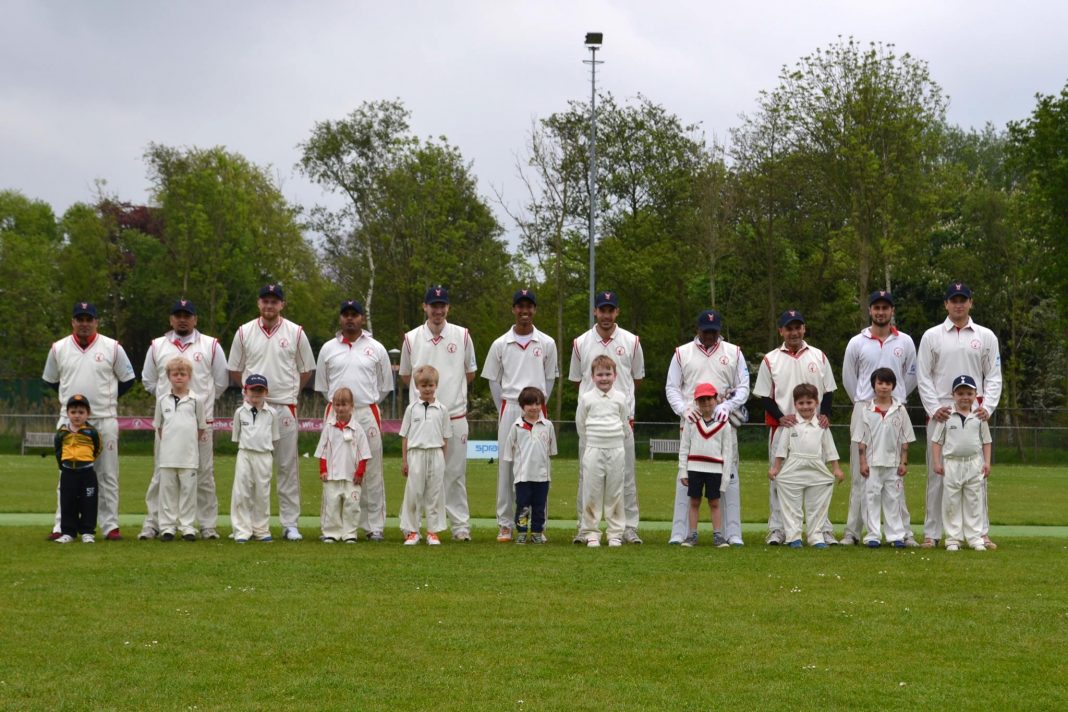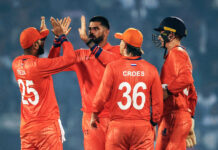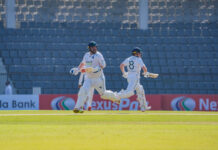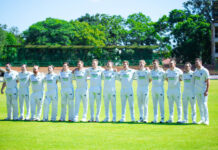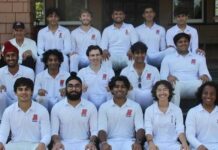Among the anniversary celebrations in the Netherlands this year, one of the more notable is that of Haarlem cricket club Rood en Wit, which marked 140 years since its establishment this week on 22 June.
Founding members of the Nederlandsche Cricket Bond (now the KNCB) two years later and among the participants in the first league competition in 1891, Rood en Wit were a dominant force in the early years of Dutch cricket, winning the national title in three successive years between 1892 and 1895 and going on to be champions a further seven times before the outbreak of World War I.
Spearhead of that early side was Carstjan Posthuma, the first Dutchman to play county cricket when he turned out for WG Grace’s London County in 1903, taking 23 wickets at an average of 15.04, but his teammates included other notable figures such as Piet Tromp de Haas, Lex Diemer Kool, Kees Pleyte d’Ailly, WHR van Manen, Leo van Gogh (the first double centurion in the history of the competition), and the brothers Holdert.
In all the men have won 14 national championships, the last of them in 1971, and the women 17, including the first four in 1934-37 and back-to-back titles in 2006-07, their most recent successes.
Stars of the women’s game have included Pauline te Beest and Irene Muller-Schoof, and more recently Cheraldine Oudolf, Annemarie Tanke, and the sisters Heather and Silver Siegers.

Notable overseas professionals who have turned out for Rood en Wit include Bill Bourne (Barbados), Emmerson Trotman (Barbados), Gary Stead (Canterbury and New Zealand), Lee Germon (Canterbury and New Zealand), Colin Miller (Victoria and Australia), Jarrod Englefield (Central Districts), and Enoch Nkwe (Gauteng).
Last in the men’s top flight in 2011, Rood en Wit have spent the past decade in the Hoofdklasse (second division), challenging for promotion in 2013 but generally occupying a mid-table position.
Their most significant achievement of the past ten years has been to launch the career of Dutch international pace man Paul van Meekeren, who played his youth cricket at Rood en Wit and made his Topklasse debut for the club before moving to ACC and thence into county cricket.
The club’s Spanjaardslaan ground, once one of the country’s two premier international venues along with HCC’s De Diepput, was last used for a national team venue in 1981 when Sri Lanka played there; grounds with turf squares are now the only contenders for Dutch games, and the Spanjaardslaan is now wholly devoted to football, Rood en Wit having moved across the road to Sportpark Eindenhout.
Although it might seem that the Haarlem club has its best days behind it, Rood en Wit remains a force in Dutch cricket, and last year conducted an intensive review of the future both of the club and of the game in the Netherlands more generally.
The outcome was the definition of seven scenarios, three for the future of Dutch cricket (stability, growth or decline), and four for Rood en Wit itself, which the review group described as ‘playful’ and ‘daring’.
The discussion leaves no doubt that the problems facing Rood en Wit mirror those which confront Dutch clubs more generally, in particular the game’s inability to make a breakthrough in recruitment, not only of juniors but also of adult players from beyond the sport’s traditional catchment areas: a handful of families and, now, from Asian immigrant communities.
But there are also issues which are specific to the club itself: the development of a new venue which is at present more attuned to football than cricket; a marked decline in playing numbers; and the fact that the first team is no longer among the country’s elite.
The fundamental choices, according to academic and long-standing member Dr Hans Keman, are between settling for playing purely recreational cricket and aiming once more to combine the recreational game with a high-achieving team or teams; and between seeking to form what the Dutch call an ‘omniclub’ (multi-sports club) with partners at Eindenhout and accepting a looser form of arrangement with football, rugby and perhaps softball.
The danger of the purely recreational route is that the club could become marginalised within the cricket community as other, more ambitious clubs – especially those with turf squares – grow through their onfield success.
The path back to the top, however, requires significant investment of time and money, in facilities, player development and recruitment, and that implies a need for substantial sponsorship.
There is no doubt that many (though by no means all) of the most successful Dutch clubs – Excelsior’ 20 and Hermes-DVS in Schiedam, VOC in Rotterdam, HCC, HBS and Quick Haag in Den Haag, and Kampong in Utrecht – are multi-sports organisations, usually with big football sections which provide financial security and a potential recruitment pool, although the relative size of football and cricket can present problems of its own.
Whatever choices Rood en Wit ultimately makes, it is clear that their success will ultimately depend to a large degree on the fate of Dutch cricket more generally, on the game’s ability, locally and nationally, to reach beyond its traditional markets and start returning towards the sort of playing numbers which existed in the 1980s.
The exposure deriving from the Netherlands’ participation in the Super League and its coverage on television, further development of playing formats and competition structures, and a greatly improved media strategy (of which we are seeing the first, halting steps) must all play their part in this process, and it is an encouraging sign that one of the country’s oldest cricket clubs, with 140 years of history behind it, is prepared to play its part in confronting this uncertain future.
You’re reading Emerging Cricket — brought to you by a passionate group of volunteers with a vision for cricket to be a truly global sport, and a mission to inspire passion to grow the game.
Be sure to check out our homepage for all the latest news, please subscribe for regular updates, and follow EC on Twitter, Facebook, LinkedIn and YouTube.
Don’t know where to start? Check out our features list, country profiles, and subscribe to our podcast.
Support us from US$2 a month — and get exclusive benefits, by becoming an EC Patron.

